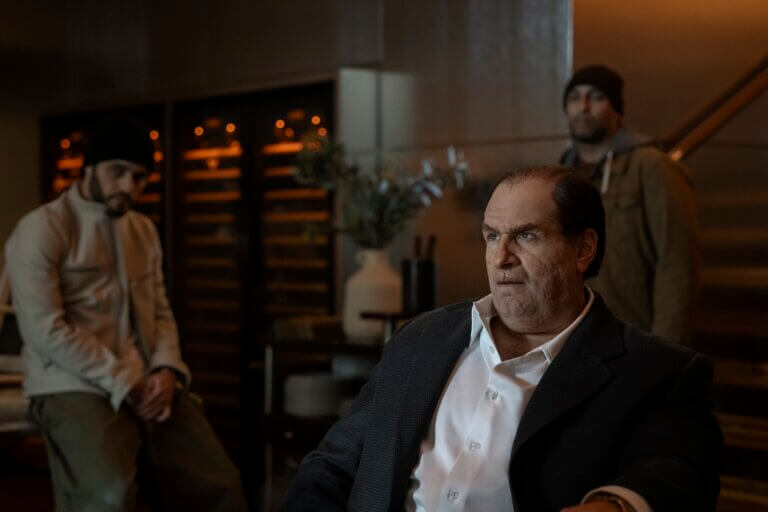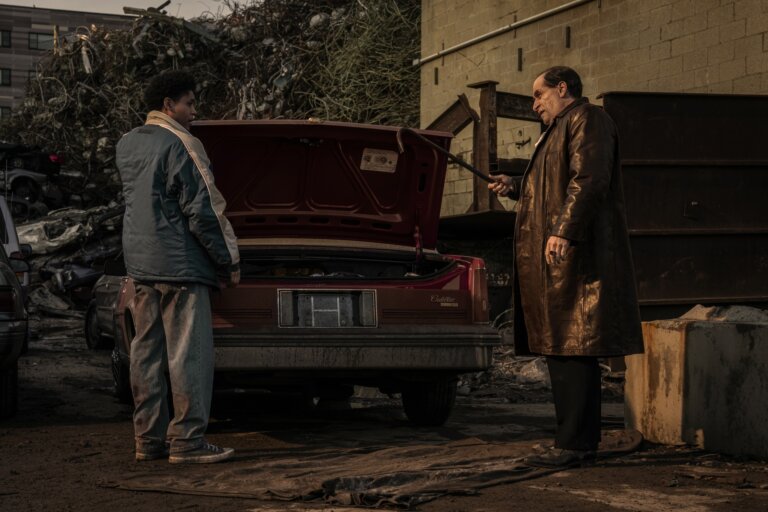Audiences first met Colin Farrell as Oswald “The Penguin” Cobblepot in filmmaker Matt Reeves’ 2022 film The Batman, starring Robert Pattinson in the title role. Oz was crime boss Carmine Falcone’s chief lieutenant, operating the Iceberg Lounge, where Selina Kyle aka Catwoman (Zoe Kravitz) worked.
On September 19, Farrell returned to the character in HBO’s eight-episode mini-series The Penguin, set one week after the events of the film. The series explores Oz’s rise to power in Gotham City’s criminal underworld.
Critics have largely embraced the show, with Filmfare writing that “D.C. might have just created the best TV villain in the superhero genre.” The Daily Beast noted that “thanks to an outright phenomenal lead performance by Colin Farrell….(the series) proves as engrossing and exciting as a Batman-adjacent show could hope to be.”
Fans are giving The Penguin their stamp of approval too. Per HBO, the spinoff series starring the 48-year-old actor opened to 5.3 million U.S. viewers across all platforms since its debut on Sept. 19, putting it above the final season premiere of Succession, which drew 4.9 million viewers. Additionally, the show has landed the biggest 4-day audience for a new series on Max in every region globally since The Last of Us in January 2023.
At a recent press conference attended by Casting Networks, Farrell spoke about what it took to inhabit The Penguin, including the prosthetics, the voice and everything in between.
Becoming ‘Oz’
 Photo courtesy of Warner Bros. Discovery.
Photo courtesy of Warner Bros. Discovery.“When we put the makeup on, (the transformation) was instantaneous,” recalled Farrell. “Looking back at it, your reflection – it’s not what you have seen for 45 years… I just gave myself over to that. I mean, if you put something on that totally (changes) everything that you are – you would begin to feel differently. It’ll be confusing at first, but there’d be a stirring inside you. It’s a little bit strange, but it’s really powerful.”
Farrell remembered the first time he transformed into The Penguin for The Batman. It was six months before shooting, and the process took about eight hours with 10 or 11 artists. Once filming began, the process was reduced to five hours and by the time the HBO series rolled around, it was down to three.
However, his presence in The Batman was minimal – “a seedling at best” said Farrell of the five or six scenes he had. For the series, Farrell had over 80 shooting days, requiring daily transformations into The Penguin, a demanding task both mentally and physically.
Makeup designer Mike Marino, who designed Oz’s look, shared that the Penguin suit itself was like a giant snowsuit. To prevent Farrell from overheating or having the prosthetics melt off, the production team created an igloo tent on set with three industrial air conditioners pumping near-freezing air to keep Farrell-as-Oz intact. There was also a separate makeup trailer just for The Penguin, as Farrell preferred that no one outside Marino’s team saw him half-transformed.
“The last thing you want to do is have somebody come in when the nose is half on,” said Farrell. “I’d get very shy and vulnerable if someone saw me only half prepared. I wanted to keep the secret for myself, which is why I wore (a) balaclava in the read-through.”
To perfect The Penguin’s voice, Farrell worked with dialect coach Jessica Drake for two or three months before his first makeup application. Together, they explored various accents and speech patterns, listening to actors and recordings dating as far back as the 1940s. “We locked into two or three different sounds,” Farrell explained. “One was a kind of pitch that was lower down, and another was the actual dialect, the articulation of certain sounds.”
Once the look, the voice and the gait were finalized, so was the character.
“The distance between myself and that character is so significant and so profound because of the makeup, because of the visage, because of the silhouette,” said Farrell. “My eyes even look a little bit different. It’s like I’m looking out to the world in a different way.”
Birds of a Feather: Colin Farrell’s Penguin Inspirations
 Photo courtesy of Warner Bros. Discovery.
Photo courtesy of Warner Bros. Discovery.Farrell noted that several people who’ve seen the show told him that his portrayal reminded them of Dustin Hoffman’s Ratzo Rizzo from Midnight Cowboy, Robert De Niro’s Al Capone in The Untouchables and even shades of James Gandolfini’s Tony Soprano. While Farrell didn’t consciously channel those characters, he acknowledged that they may have influenced his performance on a subconscious level.
“I’ve seen Untouchables twice, I’ve seen Midnight Cowboy four times,” he said. “Anything, as an actor, you ever see, any piece of music you ever hear, it all kind of meets you inside in a place that gets used, gets filtered through every single character you do in lesser or greater ways.”
Molting The Penguin: How Colin Farrell Shed the Sinister Character
 Photo courtesy of Warner Bros. Discovery.
Photo courtesy of Warner Bros. Discovery.Letting go of the character after long shoot days was essential for Farrell. The three-hour process of applying prosthetics may have helped him mentally transform into The Penguin, but shedding that character at the end of each day was crucial for his well-being.
“The relief of (the prosthetics) coming off after 15 hours at the end of every day was like being reborn,” said Farrell. “Every day it was like a birth. You were like being born back to yourself. It was really significant.”
Farrell’s process of unwinding after shooting included watching light-hearted material, such as Pixar’s Finding Nemo. “On my life, I had to watch light stuff. I wouldn’t watch any dark material. Honest to God, Finding Nemo (was) the answer,” he said.
By the end of filming, Farrell was ready to part ways with The Penguin. “He’s such a remorselessly cruel character, and I say that with affection and not judgment,” he explained, “But I was in a bit of a funk by the end, and I was glad to be done.”
Thinking about joining Casting Networks? Sign up for a free trial today!
You may also like:













